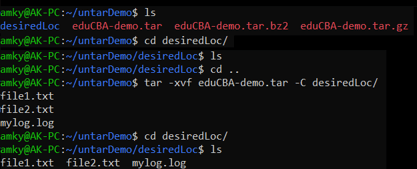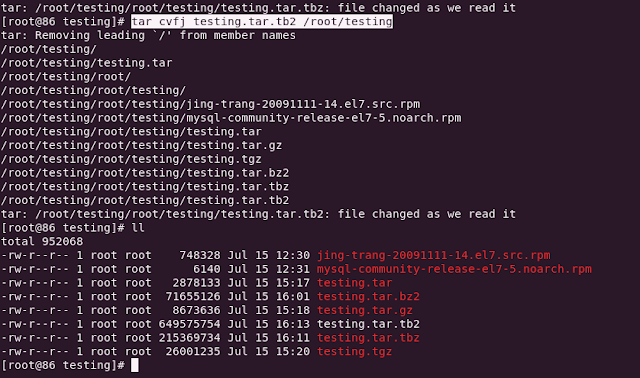
- #Untar tar.gz command line how to#
- #Untar tar.gz command line zip file#
- #Untar tar.gz command line archive#
- #Untar tar.gz command line software#
- #Untar tar.gz command line zip#
As you might imagine, using a different compression utility on a. Though gzip is the most common compression utility, it’s not the only one. Using gzip for compression is what gives the file a “.gz” double extension. tar file that’s been compressed or “zipped” using the gzip utility. As a result, one isn’t necessarily better than the other - it’s all a matter of application. tar files are less accessible but more space-efficient.
#Untar tar.gz command line zip#
zip files are more accessible but less space-efficient, while. Technical details aside, all you need to remember is that. If that’s not entirely clear, don’t worry. In other words, compressing files as a single group allows for more efficient compression methods, thereby saving space and reducing the overall size of the file. tar files are compressed as a single entity rather than a group of individually compressed files, compression utilities can group similarities between files and cut down on space. tar.gz is only accessible after extracting the entire file. zip are compressed individually, they can also be accessed individually.

However, there are some pretty major differences when it comes to accessing data within the files and the compression efficiency. tar.gz files will allow you to send relatively large packages as a single file. tar files are a compressed collection of files.īut does the compression method really matter, especially if both methods technically produce compressed files? zip files are a collection of compressed files, while. tar files are compressed as a single package, leaving its files uncompressed. zip files consist of many individually compressed files. zip automatically compresses each file within the collection.īy now, you’ve probably noticed the major difference between. Rather than use a separate compression utility to compress the entire collection.
#Untar tar.gz command line zip file#
zip file is a collection of compressed files. As we’ll see later, one popular compression utility is gzip, which compresses a. tar doesn’t compress anything, it requires a separate compression utility for compression. tar file is a collection of uncompressed files, sometimes known as a tarball.

Rather, they both accomplish the same task ( file compression) in the same way. tar files are some kind of “lesser” format than. tar files - at least not in ways that are easy to notice. zip files, the same can’t really be said for. Where most operating systems make it easy to extract and create. tar.gz files in Linux and Windows with help from this guide 🚀 Click to Tweet. Compressing and extracting files isn’t always intuitive. tar comes with a few extra features that make it the better compression format for certain files and applications. tar in the first place? As we’ll see in the next section. zip being the easier of the two to use, why use.
#Untar tar.gz command line software#
As a result, it’s become a common file extension for many open-source software packages and other resources.īut with. tar files compress large files into a single package, making it easier to store and send them through email, servers, and so on. tar files even have anything to do with old computers. Thankfully, you don’t need to be a 1960s computer technician to use and extract. Short for “ Tape ARchive,” the name “TAR” is a throwback to when files were stored on magnetic tape drives. The mt command (which controls magnetic tape operations) has acquired some dash options (especially on Linux), but the only non-optional part of the command line is still the command that you'd like to perform on the drive, such as rewind or eof.A “.tar” file is a collection of files compressed into a single file or archive. Other utilities that do not use regular option syntax includes dd and mt, but whereas most implementations of tar today understands the newer dash options, dd usually doesn't.

The archaic option string that I've used for tar above, without the dash ( -) in front of it, comes from a time before the dash was commonly used for specifying command line options.
#Untar tar.gz command line how to#
This may actually be a useful thing to know how to do on a system where tar doesn't know how to handle compressed archives. The last two examples suffer from what's commonly called "Useless use of cat", since the only thing cat does is to shuffle data to the next part of the pipeline.Ī slightly better version, without the cat: $ gzip -c -d | tar xvf.
#Untar tar.gz command line archive#
When given - as the filename, tar will read the archive from standard input. Using all of cat, tar and gzip (which is silly, don't do this): $ cat | gzip -d -c | tar xvf. The option string tells tar to extract ( x) in verbose mode ( v) the compressed ( z) archive following the f flag.


 0 kommentar(er)
0 kommentar(er)
